Charles Blackman
Charles Blackman, OBE, is widely regarded as one of the most original and significant figurative painters in Australian art. His work has been described as poetic exploring the complex world of human relationships from grief loss guilt and persecution to memories and the joy of dreams. His images of the hidden strengths and resourcefulness of those who are vulnerable (children women and the blind) project a power that has not been dimmed by time. His imagery speaks on a universal level.
Biography
1928- 2018
Charles Blackman is widely regarded as one of the most original and significant figurative painters in Australian art. A self-taught painter he was a voracious reader scouring reference material and learning from the work of other artists. The two most important influences on the young Blackman were the precocious French poet Arthur Rimbaud and the symbolist painter Odilon Redon. Through them Blackman evolved a philosophical view that for him, art making was primarily autobiographical. His first significant work, executed in the 1950s, was the Schoolgirl series in which Blackman spun the duality of dream and reality. In 1952 he held his first exhibition in his studio in Hawthorn.
About this time Blackman met art patrons Sunday and John Reed and Barbara Patterson a writer who was to have a profound effect on his life. Through Barbara who was blind Blackman developed a deeper understanding of literature, frequently reading to her. He found that through the process of reading aloud he processed and absorbed imagery more deeply. On hearing Lewis Carroll's "Alice In Wonderland" from Barbara's talking book where the enquiring Alice physically changed as she moved through to her new world, it seemed to Charles to mirror Barbara's extended body shape as she reached the end of her pregnancy. The ensuing "Alice" series is a tribute to Barbara to give sight to her poetry.
Blackman and like-minded figurative painters including Arthur Boyd John Brack John Perceval Robert Dickerson David Boyd and Clifton Pugh, all dedicated to the figurative, demonstrated their opposition to abstractionism in a jointly held exhibition 'The Antipodeans' in 1959. Again exploring duality Blackmans work of this time revolves around girls and both real and imaginary bouquets of flowers where he uses the flowers and colour to express shades feeling.
By the end of the 1950s his work had cut a path for itself on the Australian art scene with themes of childhood, innocence and blindness being tackled in an entirely new way. As Thomas Shapcott once said of him "This work is a journey through a strangely intense but various territory. His paintings are often dark with submerged threat and danger, but these are part of the forces which the innocent, the voyager, must encounter if the journey is to be made." May, 1988).
Blackman’s work has been described as poetic exploring the complex world of human relationships from grief loss guilt and persecution to memories and the joy of dreams. His images of the hidden strengths and resourcefulness of those who are vulnerable - children women and the blind - project a power that has not been dimmed by time. His imagery speaks on a universal level.
In 1959-60 Blackman enjoyed much success winning the Helena Rubenstein prize and was selected to exhibit in the Whitechapel Gallery in London. The Blackman family moved to London in 1961, living away from Australian shores for several years. However, missing the sunny climes and Australian beaches, by 1967 Blackman had acquired a home in Sydney.
In the late 1960s he undertook a number of large canvasses featuring nudes and cats. By the end of the 1970s, Blackman had commenced a new relationship with Genevieve de Couvreur celebrated through a series of paintings comprising literary musical and psychological themes. According to art critic Sandra McGrath they are "the strongest most provocative and psychological arresting performance of his career."
During the 1980s, Blackman spent considerable time working on sets for a number of ballets. The sets for Alice in Wonderland were described as stunning by the Australian newspaper. In 1987 he was responsible for establishing the concept behind the Moet et Chandon Australian Art fellowship for young Australian painters to study in France.
In 1997 Blackman was awarded an OBE for his services to art. He is represented in the National collection all state galleries and most regional galleries in addition to private and corporate collections throughout Australia and internationally.
Charles Blackman is widely regarded as one of the most original and significant figurative painters in Australian art. A self-taught painter he was a voracious reader scouring reference material and learning from the work of other artists. The two most important influences on the young Blackman were the precocious French poet Arthur Rimbaud and the symbolist painter Odilon Redon. Through them Blackman evolved a philosophical view that for him, art making was primarily autobiographical. His first significant work, executed in the 1950s, was the Schoolgirl series in which Blackman spun the duality of dream and reality. In 1952 he held his first exhibition in his studio in Hawthorn.
About this time Blackman met art patrons Sunday and John Reed and Barbara Patterson a writer who was to have a profound effect on his life. Through Barbara who was blind Blackman developed a deeper understanding of literature, frequently reading to her. He found that through the process of reading aloud he processed and absorbed imagery more deeply. On hearing Lewis Carroll's "Alice In Wonderland" from Barbara's talking book where the enquiring Alice physically changed as she moved through to her new world, it seemed to Charles to mirror Barbara's extended body shape as she reached the end of her pregnancy. The ensuing "Alice" series is a tribute to Barbara to give sight to her poetry.
Blackman and like-minded figurative painters including Arthur Boyd John Brack John Perceval Robert Dickerson David Boyd and Clifton Pugh, all dedicated to the figurative, demonstrated their opposition to abstractionism in a jointly held exhibition 'The Antipodeans' in 1959. Again exploring duality Blackmans work of this time revolves around girls and both real and imaginary bouquets of flowers where he uses the flowers and colour to express shades feeling.
By the end of the 1950s his work had cut a path for itself on the Australian art scene with themes of childhood, innocence and blindness being tackled in an entirely new way. As Thomas Shapcott once said of him "This work is a journey through a strangely intense but various territory. His paintings are often dark with submerged threat and danger, but these are part of the forces which the innocent, the voyager, must encounter if the journey is to be made." May, 1988).
Blackman’s work has been described as poetic exploring the complex world of human relationships from grief loss guilt and persecution to memories and the joy of dreams. His images of the hidden strengths and resourcefulness of those who are vulnerable - children women and the blind - project a power that has not been dimmed by time. His imagery speaks on a universal level.
In 1959-60 Blackman enjoyed much success winning the Helena Rubenstein prize and was selected to exhibit in the Whitechapel Gallery in London. The Blackman family moved to London in 1961, living away from Australian shores for several years. However, missing the sunny climes and Australian beaches, by 1967 Blackman had acquired a home in Sydney.
In the late 1960s he undertook a number of large canvasses featuring nudes and cats. By the end of the 1970s, Blackman had commenced a new relationship with Genevieve de Couvreur celebrated through a series of paintings comprising literary musical and psychological themes. According to art critic Sandra McGrath they are "the strongest most provocative and psychological arresting performance of his career."
During the 1980s, Blackman spent considerable time working on sets for a number of ballets. The sets for Alice in Wonderland were described as stunning by the Australian newspaper. In 1987 he was responsible for establishing the concept behind the Moet et Chandon Australian Art fellowship for young Australian painters to study in France.
In 1997 Blackman was awarded an OBE for his services to art. He is represented in the National collection all state galleries and most regional galleries in addition to private and corporate collections throughout Australia and internationally.
Showing all 8 results
-
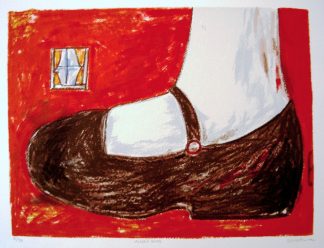
Alice’s Shoe
Charles Blackman | Pigment print on paper | 48x64cm $1,100.00
Read More -
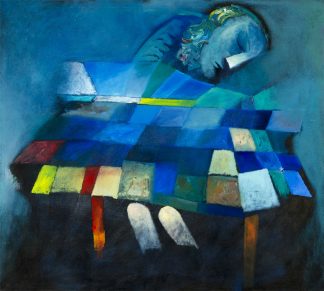
Dream Image
Charles Blackman | Pigment print on paper | 80x72cm $2,700.00
Read More -
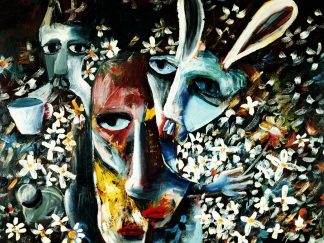
Metamorphosis
Charles Blackman | Pigment print on paper | 80x60cm $2,700.00
Read More -
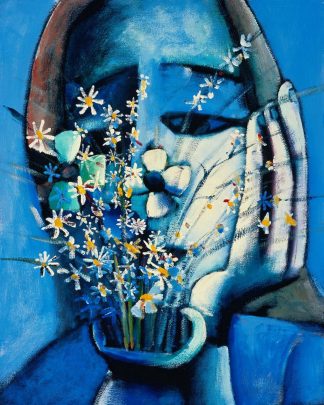
The Blue Vase
Charles Blackman | Pigment print on paper | 72x90cm $2,700.00
Read More -

The Drama
Charles Blackman | Pigment print on paper | 67x90cm $2,700.00
Read More -
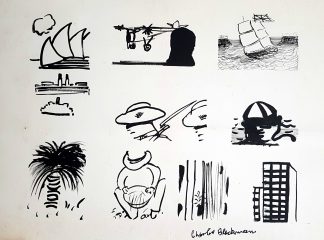
Australian Story
Charles Blackman | Pen & Ink | 54x63cm Sale! SOLD
Read More -

Nightfall
Charles Blackman | Pigment print on paper | 68x46cm SOLD
Read More -

The Presentation
Charles Blackman | Pigment print on paper | x68cm SOLD
Read More
Showing all 8 results
